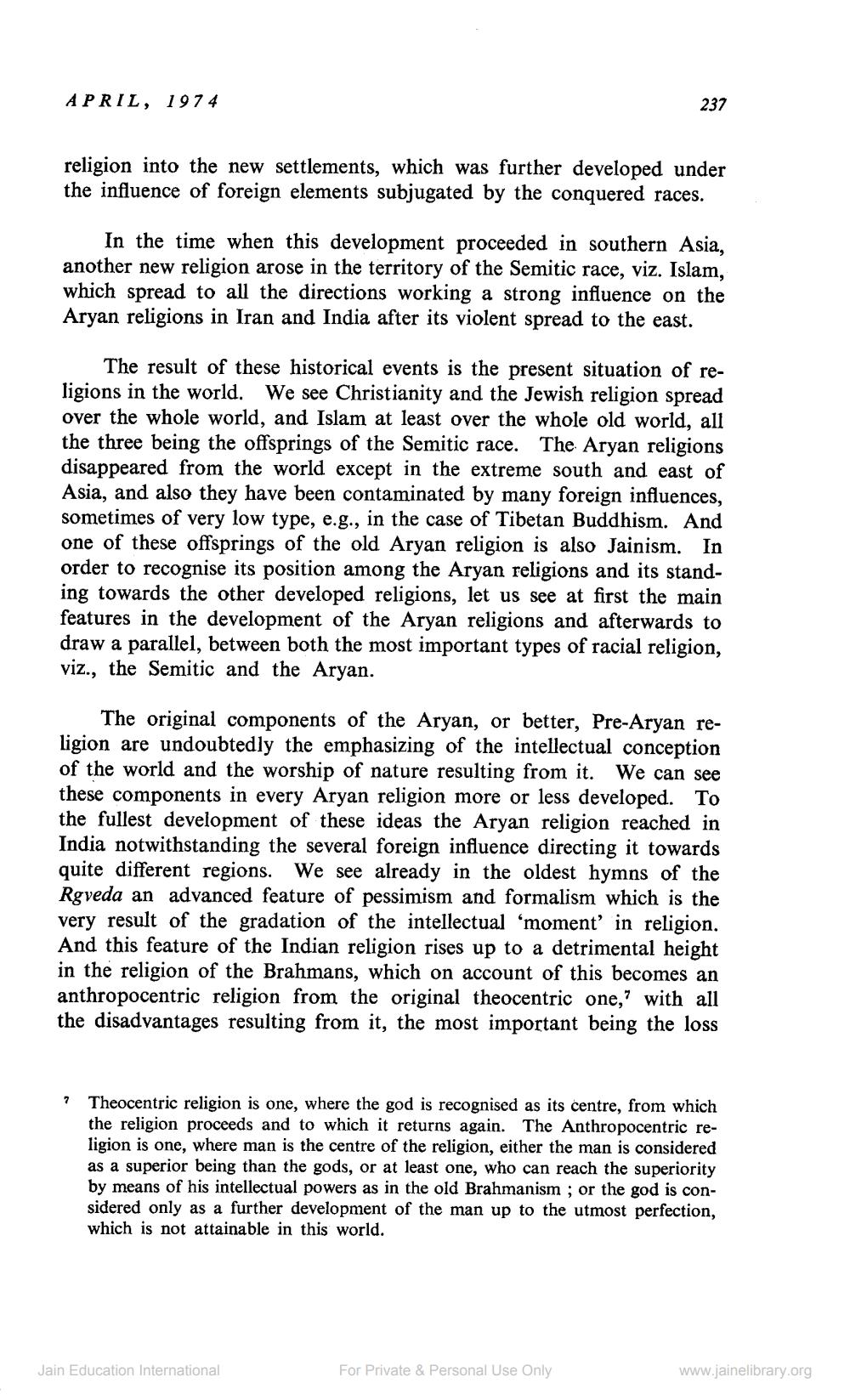________________
APRIL, 1974
religion into the new settlements, which was further developed under the influence of foreign elements subjugated by the conquered races.
In the time when this development proceeded in southern Asia, another new religion arose in the territory of the Semitic race, viz. Islam, which spread to all the directions working a strong influence on the Aryan religions in Iran and India after its violent spread to the east.
237
The result of these historical events is the present situation of religions in the world. We see Christianity and the Jewish religion spread over the whole world, and Islam at least over the whole old world, all the three being the offsprings of the Semitic race. The Aryan religions disappeared from the world except in the extreme south and east of Asia, and also they have been contaminated by many foreign influences, sometimes of very low type, e.g., in the case of Tibetan Buddhism. And one of these offsprings of the old Aryan religion is also Jainism. In order to recognise its position among the Aryan religions and its standing towards the other developed religions, let us see at first the main features in the development of the Aryan religions and afterwards to draw a parallel, between both the most important types of racial religion, viz., the Semitic and the Aryan.
The original components of the Aryan, or better, Pre-Aryan religion are undoubtedly the emphasizing of the intellectual conception of the world and the worship of nature resulting from it. We can see these components in every Aryan religion more or less developed. To the fullest development of these ideas the Aryan religion reached in India notwithstanding the several foreign influence directing it towards quite different regions. We see already in the oldest hymns of the Rgveda an advanced feature of pessimism and formalism which is the very result of the gradation of the intellectual 'moment' in religion. And this feature of the Indian religion rises up to a detrimental height in the religion of the Brahmans, which on account of this becomes an anthropocentric religion from the original theocentric one," with all the disadvantages resulting from it, the most important being the loss
7
Theocentric religion is one, where the god is recognised as its centre, from which the religion proceeds and to which it returns again. The Anthropocentric religion is one, where man is the centre of the religion, either the man is considered as a superior being than the gods, or at least one, who can reach the superiority by means of his intellectual powers as in the old Brahmanism; or the god is considered only as a further development of the man up to the utmost perfection, which is not attainable in this world.
Jain Education International
For Private & Personal Use Only
www.jainelibrary.org




